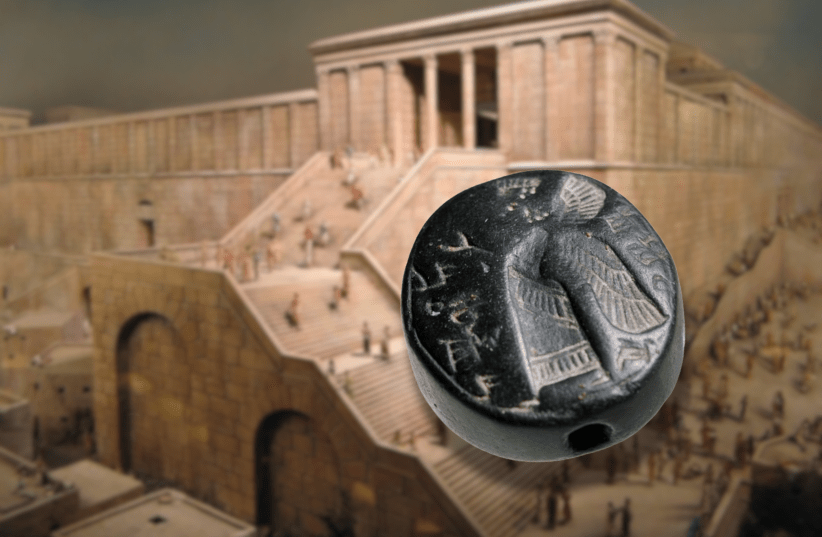Jerusalem, Israel – Archaeologists in Jerusalem’s City of David National Park have discovered an ancient and rare stone seal, about 2,700 years old, from the time after King Solomon commissioned and built the First Jewish Temple.
The seal contains a name inscribed in ancient Hebrew and a winged figure, possibly a monarch, described by some as a demon and others as a genie. On either side of the figure is an inscription of the owner’s name in ancient Hebrew reading, “LeYehoʼezer ben Hoshʼayahu”.
Dr. Yuval Baruch and Navot Rom, excavation directors for the Israel Antiquities Authority (IAA) commented, “The seal, made of black stone, is one of the most beautiful ever discovered in excavations in ancient Jerusalem, and is executed at the highest artistic level.”
Israel Antiquities Authority Archaeologist and Assyriologist Dr. Filip Vukosavović studied the seal. He stated “This is an extremely rare and unusual discovery. This is the first time that a winged ‘genie’ – a protective magical figure – has been found in Israeli and regional archaeology. Figures of winged demons are known in the Neo-Assyrian art of the 9th-7th Centuries BCE, and they were considered a kind of protective demon.”
Dr. Vukosavović added, “It seems that the object was made by a local craftsman – a Judahite, who produced the amulet at the owner’s request.”
The seal reveals the strong influence of the Assyrian Empire on the Jewish culture of that era.
The object was “worn as an amulet around the neck of a man named Hoshʼayahu, who held a senior position in the Kingdom of Judah’s administration. By virtue of his authority and status, this Hoshʼayahu allowed himself to ennoble himself and flaunt a seal with an awe-inspiring figure engraved on it – one embodying a symbol of authority,” Dr. Vukosavović explained.
The scientists of the IAA have noted the biblical connections with the names on the seal. The name Hoshayahu likely belonged to the original owner who passed the treasure on to his son, Yeho’ezer.
“The hypothesis is that upon Hoshʼayahu’s passing, his son Yehoʼezer inherited the seal, and then added his name and his father’s name on either side of the demon. This he did, perhaps, to directly appropriate to himself the beneficial qualities he believed the talisman embodied as a magical item,” the IAA stated in a press release.
It continued, “The name Yehoʼezer is familiar to us from the Bible (Chron. I 12:7) in its abbreviated form – Yoʼezer, one of King David’s fighters.”
The names on the amulet also correspond with a name in the Book of Jeremiah (Chapter 43, verse 2).
Israel’s Heritage Minister Rabbi Amichai Eliyahu, praised the discovery, declaring, “The spectacular and unique find discovered in the excavations of the Israel Antiquities Authority and the City of David opens another window for us into the days of the Kingdom of Judah during the First Temple period, and attests to that administration’s international connections.”
Eliyahu continued, “In doing so, it demonstrates the importance and centrality of Jerusalem already 2,700 years ago. It is impossible not to be moved by such an unmediated and direct encounter with a chapter of our past, a time in which the First Temple stood in all its glory.”
More information about the seal will be presented to the general public at the 25th annual “City of David Research Conference” to be held the first week of September in Jerusalem.



